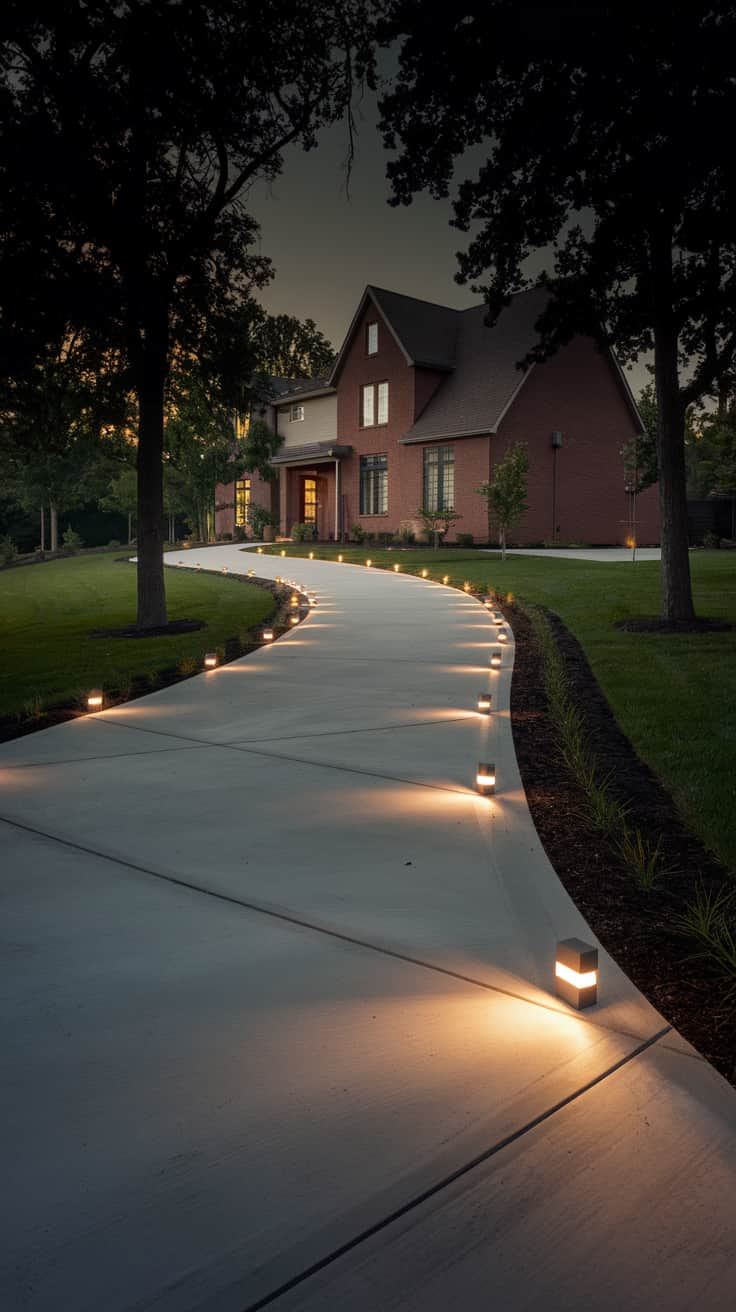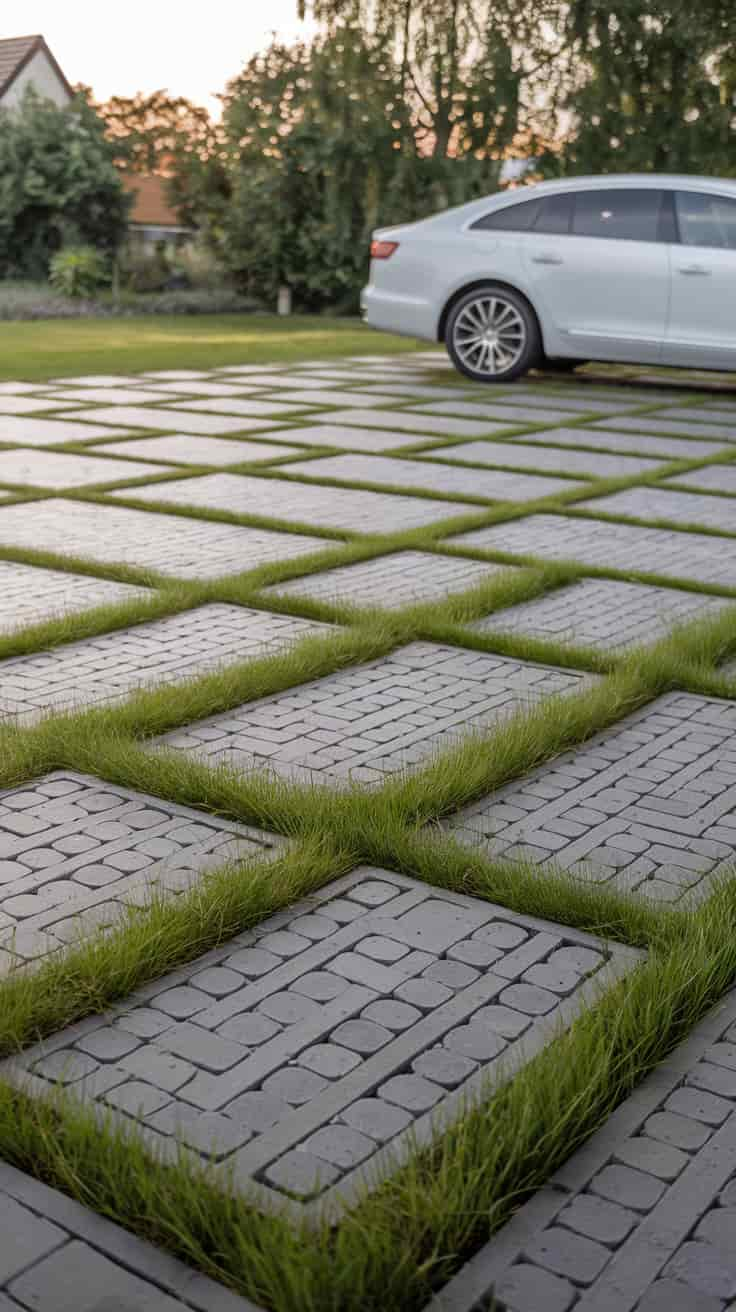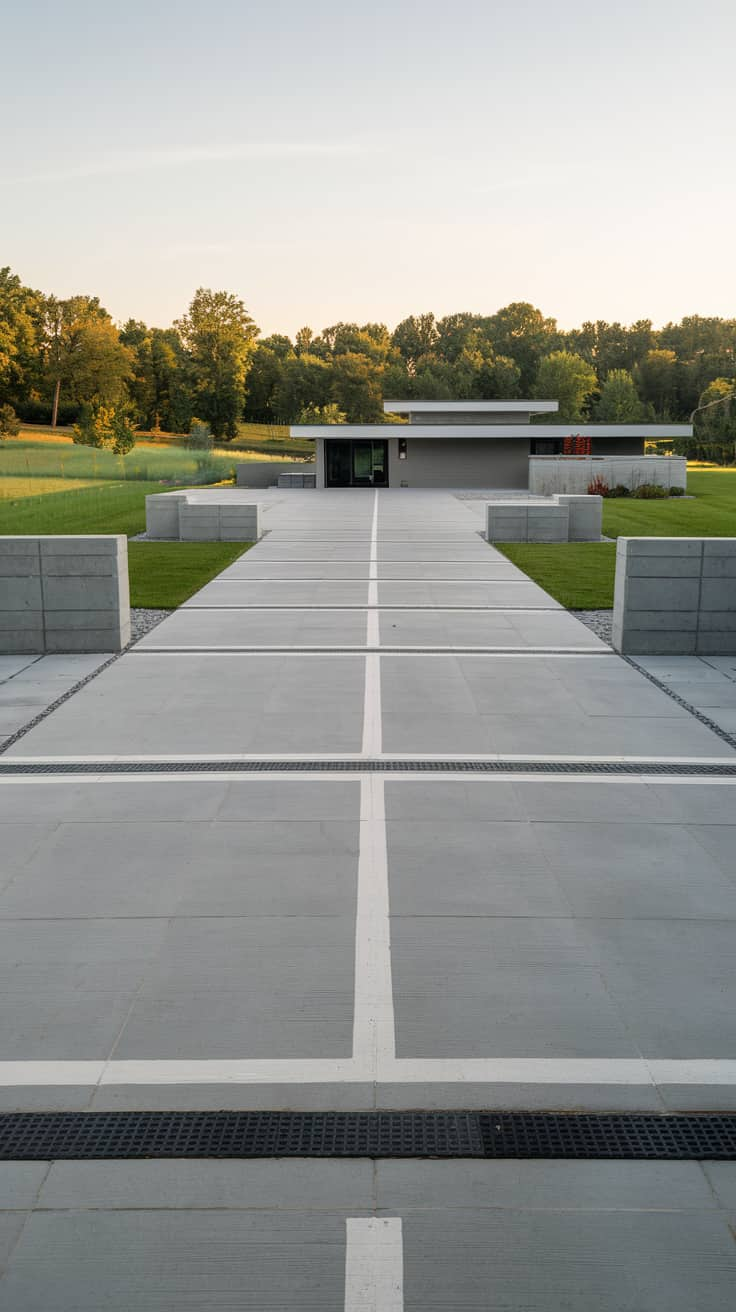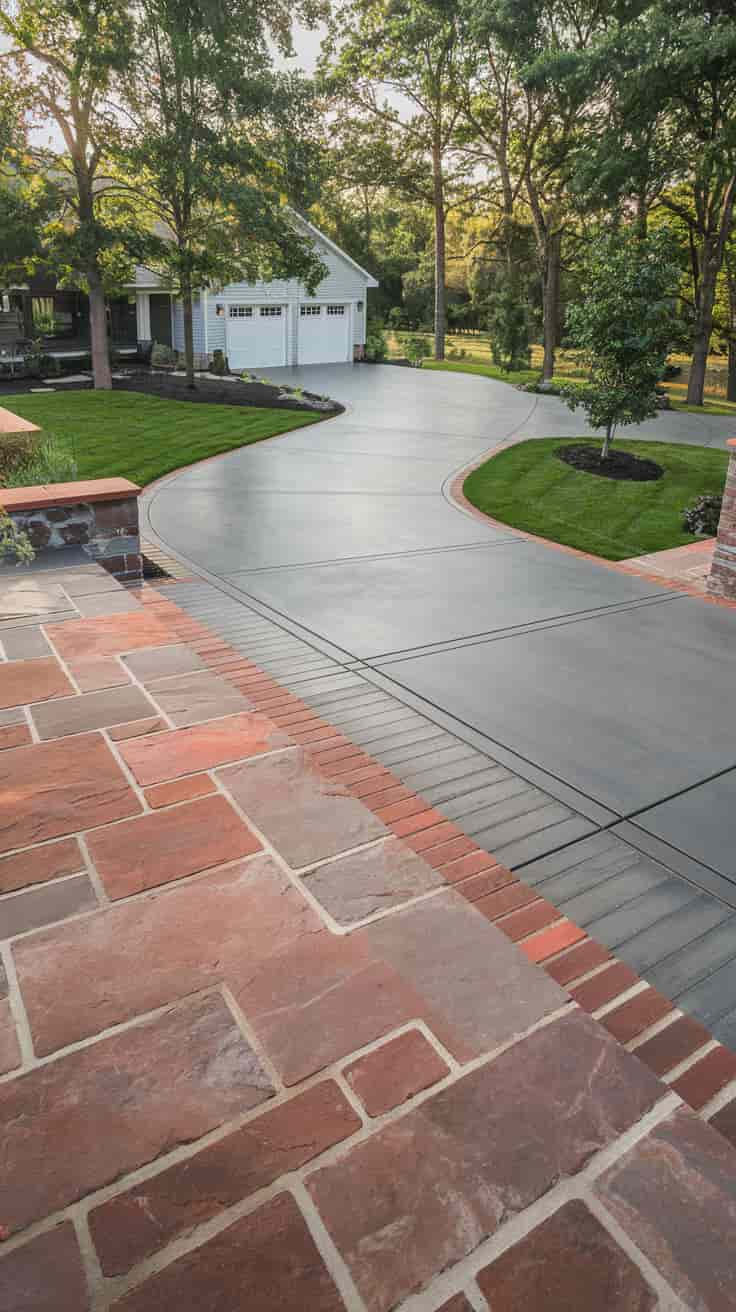When designing a modern driveway, the goal is to create a space that is not only functional but also enhances the overall aesthetic of your property.
The driveway is often the first thing visitors notice, so its design should reflect the clean lines and contemporary style of modern architecture.
Here are some key elements to consider when planning your modern driveway.
1. Choose Minimalist Materials:
Important Point
When selecting materials for your design, opt for minimalist choices that emphasize simplicity and functionality.
Materials like concrete, glass, and steel are popular in minimalist design for their clean lines and lack of ornamentation.
These materials help create a sleek, uncluttered look that can make spaces feel more open and airy.
Additionally, minimalist materials often come in neutral colors, which can easily blend into the environment and allow other design elements to stand out.
2. Incorporate Geometric Patterns:
Geometric patterns are a key feature in modern design, adding visual interest and structure to a space.
Whether used in flooring, wall treatments, or even in furniture, these patterns can break the monotony and introduce a sense of order and balance.
Shapes like triangles, squares, and hexagons are often used to create a dynamic yet harmonious feel.
The regularity of geometric patterns can also guide the eye through a space, enhancing the overall flow and rhythm of the design.
3. Add Lighting:
Lighting plays a crucial role in highlighting the features of a design and setting the mood. In minimalist and modern designs, lighting should be both functional and decorative.
Consider using recessed lighting, sleek pendant lamps, or even hidden LEDs to create soft, ambient lighting that enhances the space without overwhelming it.
Strategic placement of lighting can also emphasize architectural details, create shadows, and add depth, making the space more inviting and dynamic.
4. Integrate Landscaping:
Integrating landscaping into your design not only adds beauty but also enhances the connection between indoor and outdoor spaces.
Use plants, water features, and natural materials to create a seamless transition from the interior to the exterior.
Landscaping can soften the hard edges of modern materials and provide a refreshing contrast with the built environment.
Additionally, thoughtful landscaping can improve air quality, provide shade, and create a serene environment that complements the overall design.
5. Use Permeable Surfaces:
Incorporating permeable surfaces into your design is an environmentally friendly choice that supports sustainable practices.
Permeable surfaces, such as gravel, permeable pavers, or porous concrete, allow water to filter through the ground rather than running off into storm drains.
This helps reduce the risk of flooding and replenishes groundwater supplies.
Moreover, permeable surfaces can add texture and variety to your design, enhancing both its aesthetic appeal and its functionality.
6. Opt for a Monochromatic Palette:
Choosing a monochromatic color palette involves using variations of a single color throughout your design.
This approach creates a cohesive and harmonious look, making spaces feel more unified and serene.
By playing with different shades, tints, and tones of the same color, you can add depth and interest without overwhelming the space.
A monochromatic palette also allows for flexibility in highlighting textures and patterns, as the lack of contrasting colors shifts the focus onto these other design elements.
7. Incorporate a Border:
Incorporating a border into your design can help define spaces and create a sense of order.
Borders can be used in various ways, such as framing a garden bed, outlining a patio, or adding a decorative edge to a pathway.
They serve both functional and aesthetic purposes, guiding movement and visually separating different areas.
Borders can be made from materials like stone, brick, or wood, and they can also introduce color, texture, and contrast into the design, enhancing the overall structure and appeal.
8. Create a Seamless Transition:
A seamless transition between different areas of your design is crucial for creating a cohesive and fluid environment.
Whether it’s transitioning from indoors to outdoors, from one room to another, or between different levels, the key is to maintain visual and material consistency.
This can be achieved by using similar flooring, colors, or materials across different spaces.
Additionally, features like large windows, sliding doors, or continuous pathways can help blur the boundaries and make the transition feel natural and uninterrupted.
9. Add a Gate or Entry Feature:
A gate or entry feature serves as the welcoming point of your space, setting the tone for what lies beyond.
It’s an opportunity to make a strong first impression and introduce the design language of the rest of the area.
Whether it’s a simple wooden gate, a wrought iron arch, or a more elaborate entryway with stone pillars, this feature can provide both security and aesthetic appeal.
An entry feature can also help define boundaries and create a sense of arrival, making the space feel more intentional and inviting.
10. Consider Textured Finishes:
Textured finishes add depth and character to surfaces, making them more engaging and visually interesting.
Whether it’s a rough stone wall, a brushed metal surface, or a textured plaster finish, these elements can bring a tactile quality to your design.
Textured finishes play with light and shadow, adding complexity to otherwise flat surfaces. They can also evoke a sense of warmth and comfort, making spaces feel more inviting and grounded.
When used thoughtfully, textured finishes can enhance the overall aesthetic by adding layers of detail and sophistication.
Like this post? Share it with your friends!
Suggested Read –
- Top 10 Tiles Companies in India 2024
- Measurement Book : How to Write Measurement Book
- Create a Cozy Christmas Ambiance with Warm Lighting
- Autumn Home Makeover: Transform Your Space for the Season
- What is Plum Concrete | Application of Plum Concrete | Mix Design of Plum Concrete | Methodology of Plum Concrete
Conclusion
Designing a modern driveway involves more than just selecting the right materials; it’s about creating a cohesive space that complements the overall design of your home.
By focusing on clean lines, minimalist landscaping, and the thoughtful integration of materials and technology, you can create a driveway that is both functional and aesthetically pleasing.
Whether you’re looking for sustainability, style, or convenience, these key elements will help you design a modern driveway that stands out.











Leave a Reply